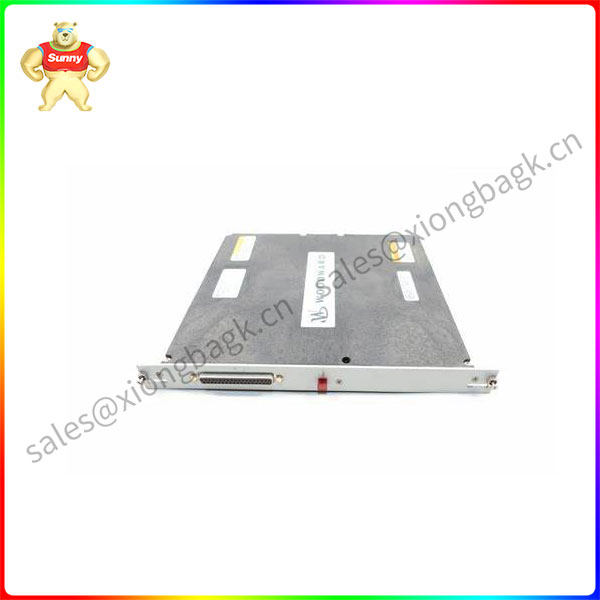DCS control system industry definition
DCS Control System (Distributed Control System) is an advanced industrial automation control system, its core concept is to disperse the control function to a number of independent controllers, and through the network to connect these controllers, while the operation display centralized in the central monitoring station for unified management. This system design is based on the high integration of computer technology, communication technology, control technology and CRT display technology (modern has been generally replaced by more advanced visualization technology), aiming to achieve complex control tasks in the industrial production process.
5464-834 In a DCS system, individual controllers are responsible for monitoring and controlling field equipment, such as sensors, actuators and other process equipment, and each controller can independently handle a part of the control task, enhancing the stability and reliability of the entire system. The system adopts redundant design, fault tolerance mechanism, fault self-diagnosis and automatic processing technology to ensure that even if a certain part fails, the whole system can maintain efficient operation.
DCS control system industry classification
According to the classification standard of product type, the DCS control system industry can be subdivided into three main parts: hardware, software and services. The hardware includes all kinds of boards, cabinets and peripherals required by DCS system; The software involves the development and application of system control logic and operation interface. Services cover system integration, maintenance and technical support.
DCS control system industry development history
The development process of DCS control system began in the mid-1970s, when due to the rapid development of computer technology and the increasing demand for industrial automation, the traditional centralized control system (CCS) gradually could not meet the complexity and flexibility requirements of industrial production. In this context, DCS system came into being, marking the transformation of industrial control from centralized to decentralized. In 1975, Honeywell took the lead in launching the world’s first DCS system, named TDC-2000. This system adopted the advanced microprocessor technology at that time, realized the decentralized execution of control tasks and the centralized operation of monitoring and management, and was rapidly applied in petrochemical, electric power and other industrial fields. Then in the 1980s, DCS 5464-834 systems experienced a period of rapid development. More enterprises and brands have joined the DCS market competition, such as Yokogawa, Siemens, ABB and so on. DCS systems in this period began to adopt more advanced computer technology, such as 32-bit processors and redundant fault tolerance technology, which improved the performance and reliability of the system. At the same time, the application of graphical user interface and interactive operation makes the system more intuitive and convenient to use.
In the 1990s, with the development of information technology and network communication technology, DCS systems began to integrate more advanced functions, such as remote monitoring, data analysis, and integration with enterprise information management systems (such as ERP, MES). The addition of these functions enables the DCS system not only to complete process control tasks, but also to provide production management and decision support. By the beginning of the 21st century, DCS systems have developed into highly integrated and intelligent systems. They can support a variety of communication protocols and seamlessly connect with fieldbuses, smart devices and the Internet of Things, achieving a high degree of data sharing and deep interconnection of systems. In addition, advanced control strategies such as model predictive control and real-time optimization are also widely used in DCS systems, further improving the efficiency and quality of industrial production.
 中文版
中文版





